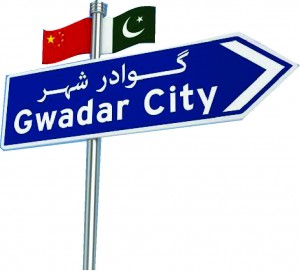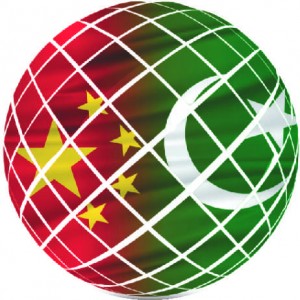Hiccups and Challenges to CPEC
How to turn them into opportunities?
Hassaan Bin Zubair
China-Pakistan Economic Corridor is a US$62 billion project designed to resolve Pakistan’s energy deficit, improve connectivity and establish economic development zones and supporting social infrastructure that lay the foundations for subsequent economic growth. Challenges posed by the geographical environment, terror groups, political instability and the management of debt, along with geopolitical issues relating especially to relationships with India, are examined and assessed in this write-up.
China-Pakistan Economic Corridor (CPEC) is not a solitary road; it is a vast network. It will spur the growth of industrial zones supported by energy plants, linking Kashgar in China to Gwadar in Pakistan. All of Pakistan’s provincial capitals would serve as fundamental nodes for the CPEC. Balochistan would be the primary beneficiary of the project. The other provinces, especially Khyber Pukhtunkhwa, will also benefit from this megaproject. There is an area of significant interest in the northern areas of Pakistan, especially the region of Gilgit-Baltistan in the route. Gilgit-Baltistan has never been formally integrated into the Pakistani state and does not participate in Pakistan’s constitutional and political affairs. Despite several people travelling from Gilgit-Baltistan to the rest of Pakistan in search of jobs and education, there has not been much socio-political integration. CPEC will change all that and will not only solve the problems faced due to transportation and communication but will also diversify the source of income – which has traditionally been only tourism – for the people of the region.
CPEC would also revolutionize the existing socioeconomic setting of Balochistan by dramatically altering its communications and transport sector, and revamping its infrastructure. CPEC is intended not only to make available to China, the shortest energy supply route from Africa and the Middle East but to also augment trade and cooperation, thus reinventing Pakistan as an energy corridor between South Asia, China, and Central Asia. The Gwadar port ultimately will offer China an entry point into the Arabian Gulf and consequently widen its geopolitical influence. CPEC, as well as the new Silk Road will also become an engine of economic growth for China’s underdeveloped western provinces, including Xinjiang, by opening their markets to global competition and help them be at par with China’s developed coastal cities and provinces.
A program of such magnitude requires improving capacity in planning and implementation as it progresses. It is also necessary to identify the spectrum of external and internal challenges that it faces so that these can be dealt with and overcome.
There are several international and regional geopolitical realities that are the cause of criticism and opposition to CPEC. There is competition for influence between the United States and China at one level, and between India and China at another. Since the US has grown closer to India, Pakistan is in the crosshairs of this US-China rivalry. While the US is interested in a stable and economically progressing Pakistan, it prefers that it follows its line on Afghanistan, but it maintains that nothing should adversely impact India to which it has become a strategic ally. For US, the Pakistan-China economic relationship was first met with ambivalence and then with some overt criticism. The American argument against Chinese investment in Pakistan is that the terms offered by China are to its advantage as the rates are far higher than what would be offered by other countries; although it raises scepticism since neither America nor any other country, including their multinationals, are willing to step in on the same scale as China did.
For India, any development that strengthens Pakistan economically is a nightmare, and CPEC is seen as a threat to its overarching ambition to dominate South Asia. As far as Pakistan’s other neighbours are concerned, Iran views Gwadar as a competitor to its Chabahar Port, which is being developed with an overwhelming assistance of India, an alternative trade route to landlocked Afghanistan. However, Afghanistan can certainly benefit from the trade linkages offered by CPEC, and the route to Gwadar is shorter and economically more viable than that to Chabahar. It must not be forgotten here that Afghanistan has had a difficult relationship with Pakistan since 1947, largely due to reasons of its own making, and which were fuelled by India to create a hostile Afghanistan on the western flank of Pakistan. There is substantial proof that India is using Afghanistan with help from the National Directorate of Security (NDS), the Afghan intelligence agency, to destabilize Pakistan by training, arming, financing, and sending terrorists into erstwhile FATA and urban areas of Pakistan, and also insurgents to fight the state in the province of Balochistan. While the objective of this campaign is to create a relentless law and order situation, a specific objective is to target Chinese nationals engaged in CPEC or other projects within Pakistan to cause a sense of insecurity. Kulbhushan Jadhav, the serving Indian Naval Commander working covertly in Chabahar for the Indian intelligence agency Research and Analysis Wing (RAW), on his capture within Pakistan confessed and provided details that he was part of a wider Indian campaign to arm, fund and direct terrorists in Balochistan to destabilize Pakistan in general, and disrupt CPEC in particular. We need to completely defang the India-backed terrorists in Balochistan while at the same time implement plans to make the economic and political process more inclusive.
There are also several internal challenges.
In the context of CPEC, Long-Term Plan and Pakistan’s vision is to modernize infrastructure and remove critical bottlenecks within it, which constrain long-term growth and development. CPEC will connect major economic regions of Pakistan to reduce regional economic development gaps through the creation of nodal cities as interconnective engines of growth and upgrade the level of development, particularly at the provincial level, with the input of Chinese aid, technical assistance and investment. While the long-term guiding visions of both partners are clear, complementary and justified, implementation constitutes significant challenges. In Pakistan, there was a discussion on whether a program approach or a step-by-step project treatment was preferable. The Chinese planners must also have been under tremendous pressure to deliver and would have, one presumes, preferred a step-by-step approach. Understandably the pragmatic approach prevailed. The reality is that one approach is not exclusive of the other. A stepped prioritization process is required, as are targeted interventions in parallel. In Pakistan, centralized planning and decentralized implementation is the practice. In China, decentralized planning and centralized implementation is the rule. Both methods have to be harmonized as CPEC progresses.
Both the governments have attempted to be transparent, the general impression in Pakistan is that the government of Pakistan has not managed to explain clearly the full extent of cooperation with China under CPEC, particularly the financial and other implications. As a result, some manner of misunderstanding can arise. Of course, some of this questioning, sceptical or negative projection, especially in social media, comes from its being motivated and even paid for by those opposed to CPEC, including India. Pakistan’s governmental and other policy community has to step up to better explain CPEC; not just through official spokespersons, and in the traditional print and electronic media, but via social media as well.
In the case of Pakistan, there also seems a lack of adequate training and vocational linkages. Training is being imparted here and some trainees being sent to China but much more needs to be done. Then there are governance and delivery capacity issues. There has been deterioration in Pakistan’s capability to implement projects in the last two decades. To complete projects in the least possible time for the economic benefits to begin flowing at the earliest, more Chinese engineers and skilled workers will have to be utilized. This adds to the perception that in CPEC and other Chinese-related projects, fewer Pakistanis than desirable are being employed.
Chinese companies working in Pakistan feel that the bureaucratic approval and processing timeline of Pakistan’s bureaucracy is very slow; the tax authorities are inconsistent in their approach; security measures are well in hand but at times the cautious approach of the dedicated security authorities slows down the pace of work; and that some less experienced Chinese companies are trying to underbid for projects beyond their capability.
CPEC is slowly changing the economic landscape of Pakistan and we need to hasten this process. There are seven additional areas we need to focus on. First of all, we need to better analyze CPEC projects and more diligently negotiate their terms and conditions be they foreign direct investment (FDI), soft, or commercial credits. Secondly, to attract the large Chinese investment companies to take equity positions in many of the projects to both reduce our exposure and ensure they are structured better to eliminate the possibility of gaming the system. Thirdly, proactively identify and engage Chinese sunset industries to encourage them to relocate to Pakistan under CPEC’s Special Economic Zones (SEZs). Fourthly, transform Gwadar, which has a prime strategic location outside the Strait of Hormuz, into not only goods and oil/gas transshipment center but also a petrochemical complex by linking Gulf Cooperation Council (GCC) exports and Chinese imports. This may be already happening if Saudi Arabia sets up a refinery in Gwadar. Fifthly, revive the original plan to parallel TAPI natural gas pipeline with an oil pipeline branching off to Gwadar. Sixthly, to jump to developing links, training, and synergy for our software industry with their Chinese counterparts without waiting, as now in the plan, for industries to be set up in the special economic zone (SEZs). Much less investment and resources are required than in bricks and mortar. Seventh, more training at all levels for CPEC projects and programs, so that more Pakistanis are progressively employed and develop capabilities to use at home and abroad, as happened when thousands of engineers and technicians were trained by the erstwhile USSR to establish and run the Karachi Steel Mills in the 1970s. In terms of impact and acceptability, the advantages of CPEC will be recognized and acknowledged by the people of Pakistan when they can see and progressively experience the benefits. Benefits in terms of more jobs, and an economy that is delivering and thereby improving their quality of life and expanding opportunities for them and their children. The Pakistani nation is sure that this shall be the outcome. But to reach this national objective we need to identify both external and internal challenges, a step that is imperative to work at overcoming them.
 Jahangir's World Times First Comprehensive Magazine for students/teachers of competitive exams and general readers as well.
Jahangir's World Times First Comprehensive Magazine for students/teachers of competitive exams and general readers as well.





